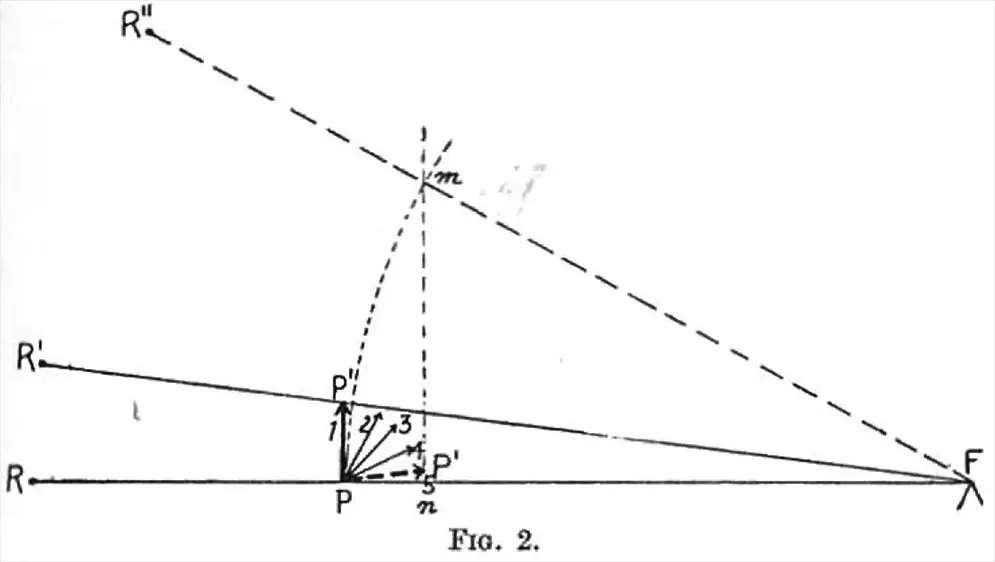Points of Application
One determinant of the value of a force its its point of application. By varying the ratio between the lengths of the lever arms (FR and FP) in any lever, the ratio between the force expended and the resistance overcome will be changed.
In levers of the second and third classes, however, this change can never overcome their fundamental differences of function as to speed and force.
The longer the power-arm, the more resistance can be overcome. The longer the resistance-arm, the more power will be required to move it.
The longer the power-arm, the more resistance can be overcome. The longer the resistance-arm, the more power will be required to move it.

Direction of Force
Another determinant of the value of a force is its line or direction of application.
It is greatest in power when the line of action is at right angles to the lever-arm, it diminishes in power as the angle of force-incidence decreases. The value of a force is greatest in power when the line of action is at right angles to the lever arm.
The value of a force diminishes in power as the angle of force-incidence decreases. When the angle reaches zero, the power-effet of the force upon the lever-movement is also zero .
Speed Effect of a Force
When the line of action is parallel to the lever-arm, the force cannot act against the resistance to be overcome.
The speed effect of a force is just the reverse of this.
- The speed effect of a force is least when the force acts at right angles to the lever arm.
- The speed effect of a force increases as the right angle of force-incidence decreases.

Elements of Diagram
Direction 1 = greatest force, least speed, Direction 5 = least force, greatest speed.
PP' = distance through which power acts.
The lengths RR' and RR'' represent the distance through which weight is moved.
Since the vector PP' [1] is the same for all directions, the difference in length between RR' and R R'' shows the change in speed resulting from a change in direction of force.
PP' = distance through which power acts.
The lengths RR' and RR'' represent the distance through which weight is moved.
Since the vector PP' [1] is the same for all directions, the difference in length between RR' and R R'' shows the change in speed resulting from a change in direction of force.
PP' represents magnitude of Force
If a force, (the magnitude of which is represented by PP') acts in direction 1, it will move RF into the position R'F,
and the resistance R will move through RR'. If the same distance PP' be applied in direction 5, in order to move P in direction 5 to P',
RF will have to move into position R''F, because PF = mF, and the distance mn is vertical, or perpendicular to R.
If the distance PP' be considered a shortening of the muscular tendon, equal amounts of contraction will produce the widely different displacements RR' and RR". The angle at which a muscle acts helps to determine the work which a given contraction will do.
If the distance PP' be considered a shortening of the muscular tendon, equal amounts of contraction will produce the widely different displacements RR' and RR". The angle at which a muscle acts helps to determine the work which a given contraction will do.
Combinations of these
- power,
- point, and
- direction relationships
If, to the maximum power-point position (levers of first and second classes), is added maximum direction-position (right angles to lever-arm), we get a lever producing the greatest amount of work when measured by the resistance that it overcomes.
[1]PP': may be assumed to be the distance through which a muscle shortens during a contraction.